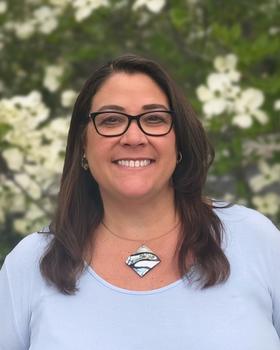As George Mason University strengthens its commitment to enhanced operational efficiency, long-term planning, and stakeholder engagement, Julie Zobel has been named George Mason’s senior vice president and chief operating officer (COO), following a nationwide search.

“Julie is a talented leader and manager, possessing a deep commitment to our community and the commonwealth,” said George Mason President Gregory Washington. “With extensive experience and a drive to support the dynamic needs of our faculty, staff and students, Julie is not bound by just how far we have come but also motivated by what we are destined to become.”
Joining George Mason in 2000, Zobel began as a health and safety engineer focused on chemical, biological, and radiation safety for George Mason’s instructional and research laboratories, serving in an escalating progression of leadership roles before becoming George Mason’s first chief risk officer in February 2024. Zobel provided operational stewardship of the university’s response to COVID-19, for which George Mason was recognized as a national leader in pandemic management. She also served as interim SVP beginning in August 2024 and was selected for this new role in April 2025 following a nationwide search.
Zobel leads the newly formed Administration and Operations division, which includes
- Facilities and Campus Operations;
- Information Technology Services;
- Auxiliary and Business Services;
- Risk, Safety, and Resilience;
- Enterprise Risk Management;
- Operational Finance and Enterprise Governance; and
- Capital Strategy and Planning.
Enterprise Risk Management (ERM), led by Interim Vice President Aurali Dade, now operates independently from the office of Risk, Safety, and Resilience (RSR), which is led by Associate Vice President Dave Farris. This allows the ERM program to continue serving as a resource for senior leadership in managing the most significant enterprise risks, while positioning the RSR team to take a stronger leadership role in driving operational safety measures. RSR now includes the units Operational Risk Management and RSR Administration, in addition to Environmental Health and Safety, Employee Health and Well-Being, and Emergency Management and Fire Safety.
Information Technology Services (ITS) has consolidated the IT Governance and IT Service Delivery teams under George Mason’s first-ever chief experience officer, Charlie Spann, providing the enterprise framework, processes, and customer-facing execution for technology use and IT service delivery across the university.
Operational Finance and Enterprise Governance (OFEG), which includes the Project Management Office, under Assistant Vice President Christine Zanellato, now reports directly to Zobel. This group includes enterprise governance, project management, and business analysis functions, extending beyond technology to include holistic operational financial strategies and forecasting across capital, space, and technology investments. Assistant Vice President for Business Services and Chief Business Officer Megan Laures will have a dotted line to unit finance and budget directors/managers, while continuing her current role in Facilities and Campus Operations.
In addition, Auxiliary Services and Operations has updated its department name to Auxiliary and Business Services (ABS) to better reflect its current charge and portfolio. Real Estate Strategy and Operations is now part of Facilities and Campus Operations, to better align property acquisition and management with the university’s asset management, maintenance, and operations functions, while playing an integral role in the planning and development of the western portion of the Fairfax Campus.
“George Mason is a remarkable place, powered by the foundation and support of our core administrative and operational units—they literally keep the lights on,” said Zobel. “As we have already begun to work more collaboratively and holistically as a unit, we are improving processes and opening new lines of communications to benefit the entire university community.”
Related News
- July 19, 2025
- July 18, 2025
- July 18, 2025
- July 16, 2025
- July 16, 2025
